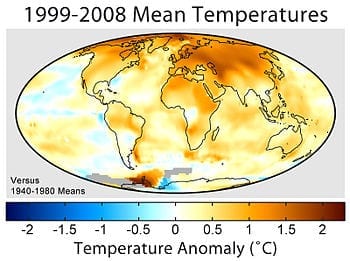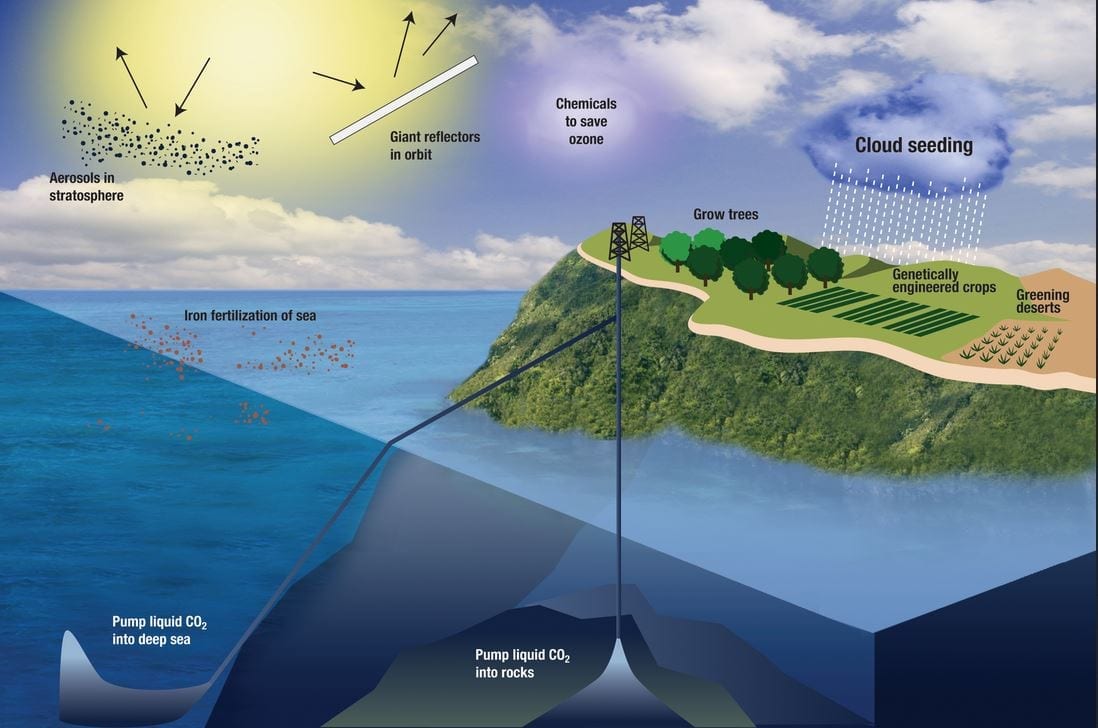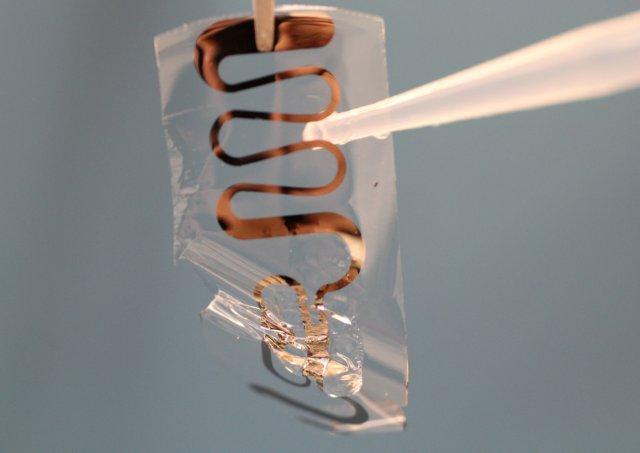
As a range of climate change mitigation scenarios are discussed, Univ. of Washington researchers have found that the injection of sulfate particles into the atmosphere to reflect sunlight and curb the effects of global warming could pose a severe threat if not maintained indefinitely and supported by strict reductions in greenhouse gas (GHG) emissions.
The new study, published Feb. 18, 2014, in IOP Publishing’s journal Environmental Research Letters, has highlighted the risks of large and spatially expansive temperature increases if solar radiation management (SRM) is abruptly stopped once it has been implemented.
SRM is a proposed method of geoengineering whereby tiny sulfate-based aerosols are released into the upper atmosphere to reflect sunlight and cool the planet. The technique has been shown to be economically and technically feasible; however, its efficacy depends on its continued maintenance, without interruption from technical faults, global cooperation breakdown or funding running dry.
According to the study, global temperature increases could more than double if SRM is implemented for a multi-decadal period of time and then suddenly stopped, in relation to the temperature increases expected if SRM was not implemented at all.
The researchers used a global climate model to show that if an extreme emissions pathway—RCP8.5—is followed up until 2035, allowing temperatures to rise 1 C above the 1970–1999 mean, and then SRM is implemented for 25 years and suddenly stopped, global temperatures could increase by 4 C in the following decades.
This rate of increase, caused by the build-up of background greenhouse gas emissions, would be well beyond the bounds experienced in the last century and more than double the 2 C temperature increase that would occur in the same timeframe if SRM had not been implemented.
On a regional and seasonal scale, the temperature changes would be largest in an absolute sense in winter over high latitude land, but compared to historical fluctuations, temperature changes would be largest in the tropics in summertime, where there is usually very little variation.
Lead author of the research, Kelly McCusker, from the Univ. of Washington, said: “According to our simulations, tropical regions like South Asia and Sub-Saharan Africa are hit particularly hard, the very same regions that are home to many of the world’s most food insecure populations. The potential temperature changes also pose a severe threat to biodiversity.”
The Latest on: Geoengineering
[google_news title=”” keyword=”Geoengineering” num_posts=”10″ blurb_length=”0″ show_thumb=”left”]
via Google News
The Latest on: Geoengineering
- 'Climate studies are increasingly becoming politicized'on May 7, 2024 at 11:24 pm
We need to consider more potential fixes. One is geoengineering, which seeks to "directly reduce the planet's temperature" with approaches like emitting sulfur dioxide into the stratosphere to "cool ...
- Geoengineers think they can slow climate change. The catch? No more blue skies.on May 7, 2024 at 7:00 am
Entrepreneurs and scientists are launching a new industry called solar radiation management, blocking sunlight with a sulfuric haze.
- The world can’t afford to politicize climate change researchon May 6, 2024 at 12:00 am
The idea that there is only one correct policy — cutting carbon emissions to zero in a short time frame — is absurd, and especially so when this sole policy is failing globally.
- Warning that solar geoengineering could cause unexpected regional heatingon May 1, 2024 at 1:30 am
Depending on who you ask, solar geoengineering is seen as a threat to meaningful climate action, a remote fallback, or an essential piece of the puzzle. What most people can agree on is that we don’t ...
- A Beginner's Guide to Geoengineeringon May 1, 2024 at 12:19 am
As the world struggles to balance both energy security and emissions reduction, debates around the role of geoengineering in the global energy transition are heating up. The first type of ...
- Cloud control: Humanity’s never-ending quest to control the weatheron April 29, 2024 at 6:53 am
For over a century, we’ve turned to technology in an attempt to control the weather. Are today’s geoengineering proposals any better?
- Solar geoengineering is gathering steam in the tech world as a climate solutionon April 28, 2024 at 5:04 am
Solar geoengineering — increasing the sunlight reflected back into space to cool the planet — is gaining the attention of people looking for climate solutions. But critics say it comes with risks.
- Controversial methods to cool the Earth by reflecting sunlight gain traction as global temperatures riseon April 26, 2024 at 2:20 pm
Relatively untouched ideas are gaining momentum as potential short-term solutions to lower Earth's temperature.
- Solar geoengineering to cool the planet: Is it worth the risks?on April 24, 2024 at 5:00 pm
When I first wrote about geoengineering in 2012 , it was considered far-fetched at best, and crazy by most. But 12 years later, while there is still controversy and considerable resistance to ...
- Geoengineering could save the ice sheets – but only if we start soonon April 21, 2024 at 5:00 pm
Shading Earth’s surface from sunlight could postpone or even avoid the collapse of the West Antarctic ice sheet – but only if we start soon and only in conjunction with substantial emissions ...
via Bing News










